The Star Trek franchise includes nine television shows, which tell the stories of humans exploring the universe and encountering non-human species. When combined, the storylines of the shows make up an intricate and nuanced imagined history that spans more than one thousand years, multiple alternate timelines, and at least two alternate universes.
All of these shows attempt to honor the same historical timeline, with varying levels of success. Keeping track of the history of an entire multiverse with multiple timelines is difficult, to say the least. So, there have been some understandable mistakes on the part of the writers and showrunners, especially in the early series when they were still figuring out the complete lore. Two of the newest series in the franchise — Picard and Discovery — have made a monumental effort to both honor the history created by the previous shows and create new history. These series have fleshed out the lore created by the series that came before, and they’ve added even more complexity to the universal timelines, both Prime and Mirror.
At this point, even hardcore Trek fans have a hard time keeping track of the historical record laid out by the shows. For fans who just began to love the franchise, perhaps by watching Discovery, the timeline can seem complicated at best, and convoluted at worst. The best way to truly understand it is to see the entire thing laid out series by series.
This basic timeline of the Prime Universe — the main universe in which the core storylines of the shows happens — lays out where each show fits in the overall timeline and how they overlap each other. However, Star Trek: The Animated Series has been omitted as it’s not typically considered canon when it comes to the timeline.
2151 – 2155, Star Trek: Enterprise
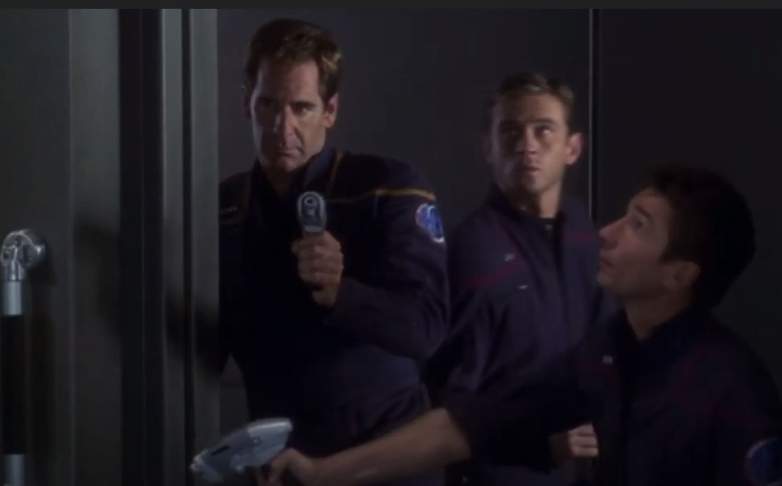
YouTube
The events in the first episode of Star Trek: Enterprise took place in the year 2151, almost 90 years after James Cochrane’s pivotal warp flight in 2063. That flight led the Vulcans to take interest in humans and initiate first contact, a ceremonial procedure where a species from the United Federation of Planets makes contact with a species that is unaware of extraterrestrial life.
Enterprise told the story of the first human Starfleet crew to undertake deep space travel. It also explored the struggles humans went through as their planet joined the interstellar political landscape of the Federation and other non-Federation planets.
The crew of the NX-01 Enterprise, the first human constructed warp ship, encountered several new species in the first few years of their mission, and many of these first contacts went poorly. They ended up in conflicts with several of these species. Some of these conflicts ended in devastating ways for Earth and the Federation. Starfleet also had a hard time adjusting to their relationship with the Vulcans. The Vulcans saw humans as too emotional and rash, while the humans saw Vulcans as cold and lacking passion or empathy. This led to many disagreements over how the Enterprise crew should conduct their affairs in deep space.
Star Trek: Enterprise is the earliest history depicted by any of the TV series, though historical events that took place in the Prime Universe before the events of the show are often referenced in Enterprise and the other shows. Some of these historical events are even shown in individual episodes when the crews travel through time, as they often do, often by accident.
2256 – 2257, Star Trek: Discovery Seasons 1 & 2

CBS All Access
Discovery has added quite a bit of complexity to the Star Trek historical record. The events depicted in seasons one and two of the series took place about ten years before the main events depicted in Star Trek: The Original Series (TOS). However, they happened just a few years after the events in the original pilot episode of TOS, The Cage, which were introduced in two later episodes, The Menagerie Parts 1 and 2.
Christopher Pike, who captained the USS Enterprise for over a decade before the next iteration of the vessel was handed over to James T. Kirk, appeared in seasons one and two of Discovery. He took over command of the USS Discovery while the Enterprise was undergoing repairs. So, though seasons one and two of Discovery took place a decade before the main events of TOS, the events impact the historical record created by The Original Series.
The first season of Star Trek: Discovery followed the crew of the USS Shenzou as they started and engaged in the war between the Federation and the Klingon empire. At the very end of the first season, a black ops faction of the Starfleet, Section 31, ended the war, and the main crew of the Shenzou was transferred to the Discovery under the command of Captain Pike.
The second season followed the crew as they uncovered information about Section 31, revealed a series of events that would destroy the known universe, and battled to prevent that future. In the course of season two, the Discovery crew found out that someone had been traveling through time for decades trying to prevent the events that led to the universe’s destruction. Of course, this added several layers of complexity to the timeline, including several alternate timelines and alternate universes that require their own detailed explanations.
At the end of season two, the Discovery crew decided to travel through time to save the universe. They succeeded, which is why the third season of Discovery happens at an entirely different point in the timeline.
2266 – approximately 2171, Star Trek: The Original Series

YouTube
The Original Series told the stories of the USS Enterprise crew as they travelled through the universe, encountering new species and making first contact with new worlds. Unlike the crew members depicted in the Enterprise series, the crew members depicted in TOS were all experienced with space travel as Earth had been part of the Federation for over two centuries by the time they embarked on their mission. This experience is evident in how they interact with new species and follow both Starfleet and Federation protocols.
Though TOS was the first show in the Star Trek franchise to air, it’s events are not chronologically first in the historical record of the Star Trek television shows. As previously laid out, the five-year long mission of the USS Enterprise took place about ten years after the Discovery time traveled to the future, and more than 100 years after the events of the Enterprise series.
Though, the events of TOS are often referenced in the other Star Trek TV shows, TOS doesn’t reference a lot of the overall historical record of the Prime Universe because much of it was created long after TOS aired. However, TOS does establish a lot of the history of the Prime Universe that is referenced in other series, like the events that led up to first contact with the Vulcans and when first contact took place.
TOS created the history of the Eugenics War, the Third World War, and the apocalyptic aftermath of that war. All of these major world events are mentioned several times throughout the other series. TOS also introduced its audience to the non-human species that were major players in the interstellar politics of the known universe, including the Vulcans, the Klingons, the Romulans, the Andorians and the Tellarites.
The lore of all the series in the Trek franchise is rooted in the history laid out by TOS. Everything else is an expansion on what this pivotal, groundbreaking show began.
2364 – 2371, Star Trek: The Next Generation
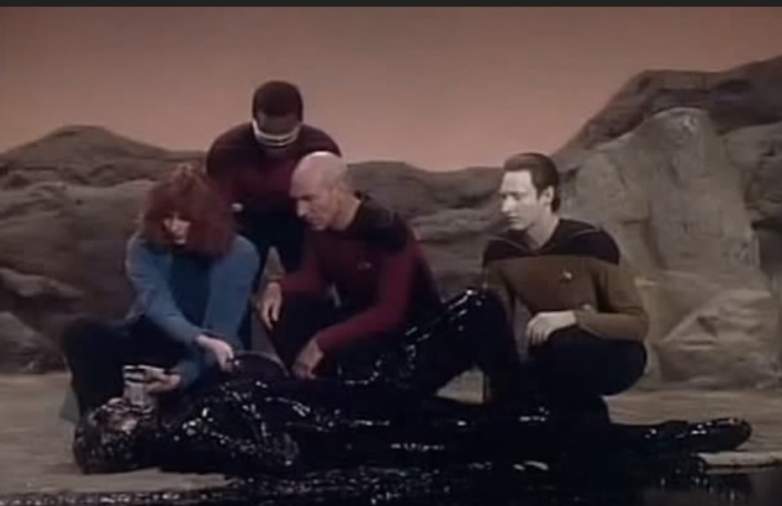
YouTube
As the title implies, The Next Generation (TNG), sought to depict a new era in Star Trek history. TNG created an era in which Earth was not only an established member of, but a leader in the Federation. The Earth of TNG was nothing like the Earth of Enterprise, 200 years earlier, or the Earth of Discovery and The Original Series, 100 years earlier.
By the time of TNG, Earth was a futuristic utopia where there was no discrimination of any kind. Capitalism had been abolished in favor of a system of shared resources. Food replicators, which had become so sophisticated they could create any food imaginable, replaced the need for livestock and big agriculture. These massive societal changes made the adventures of the Enterprise-D‘s crew much different than those of their predecessors.
When the crew made contact with new species and worlds, they were required to follow a very specific set of guidelines outlined by both Starfleet and the Federation. Their relations with species long-established in the Trek world — like the Klingons and Romulans — were guided by a deeper understanding of their cultures. These socio-political relationships were also driven by the shared histories of the species and the various treaties that were drafted to prevent future conflicts.
The Next Generation drew on a lot of the history created by The Original Series, but it also created much of the known history of the Star Trek universe. Since it was chronologically the third show to be released, TNG didn’t have much canon history to work with. So, the writers and showrunners were able to create a lot of the contemporary and historical timeline themselves.
Much of the history created by TNG is referenced in the series that came after it.
2369 – 2375, Star Trek: Deep Space Nine
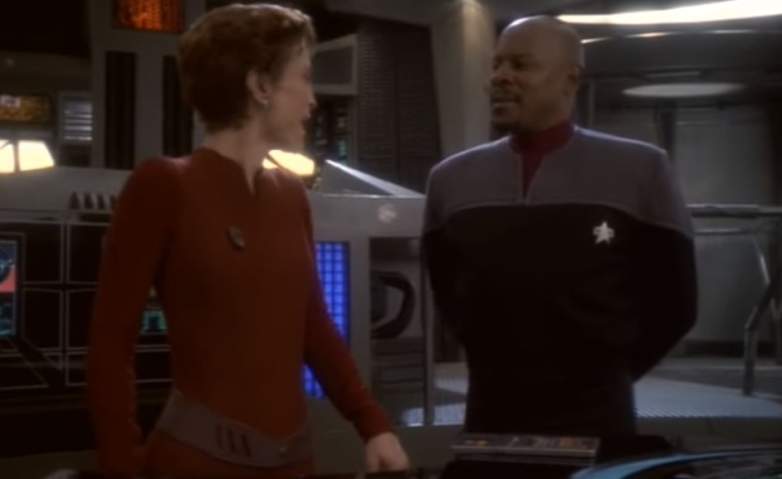
YouTube
The release of Star Trek: Deep Space Nine (DS9) marked the first time in Star Trek history that the timelines of two shows were occurring at the same time. The space station dubbed Deep Space Nine was established just five years after the Enterprise-D‘s crew conducted their first mission on Farpoint Station. For the following three years, events from TNG and DS9 were happening at the same time.
However, only one season of each show aired concurrently, so there weren’t many opportunities for repeated crossovers as shows do today. Familiar faces from TNG showed up on DS9 though. Some of them made cameos while others became recurring characters on the new installment of Trek. The writers and showrunners also threw in some interesting intersections between the timelines of the two shows. For example, the Battle of Wolf 359, which was depicted in TNG, was the battle in which the commander of DS9 lost his wife.
DS9 examines life on a space station rather than the life of a starship crew. The show focuses much more on sociopolitical interstellar relations than exploration and discovery. In that way, DS9 diverged from the typical Star Trek storylines. However, it remains firmly rooted in the timeline by including references to concurrent events happening in other series and by giving the audience a microlevel view into the difficulties of maintaining peace and order when thousands of different worlds are involved.
The show created a vast amount of new lore within the Prime Universe (and the Mirror Universe, but that’s another story), but that lore was on a much smaller scale than that of previous series. DS9 relied heavily on the history created by other Star Trek series and referenced it frequently, often expanding on it by adding new details pertinent to the personal experiences of the crew members.
2371 – 2378, Star Trek: Voyager
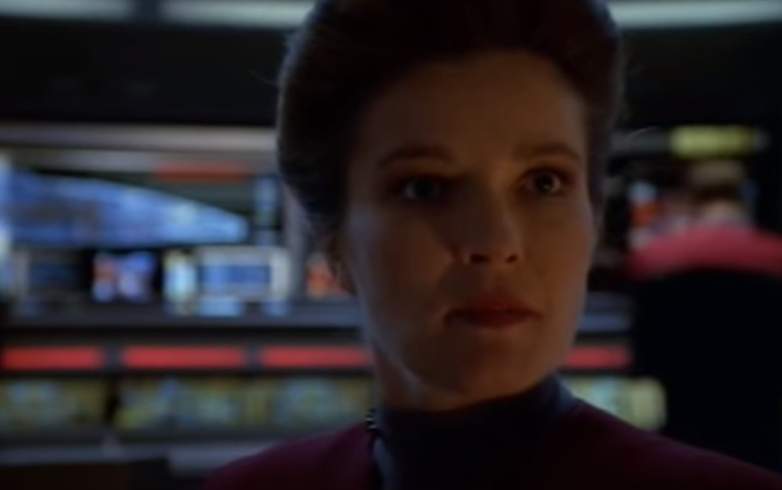
YouTube
A lot was going on in the Star Trek Prime Universe timeline in the 2360s and the 2370s. These decades became the main focus of the majority of Trek’s historical record for that precise reason. The events depicted in Star Trek: Voyager were happening at the same time as the events of DS9 and continued after those events ended.
However, there was little crossover between the two shows because early on in the series, the USS Voyager got lost in the Delta Quadrant, thousands of lightyears away from DS9’s location in the Alpha quadrant. Because of this, the history created by the adventures of the Voyager crew was largely separate from the rest of the Trek world, though some familiar species like the Borg showed up regularly.
Voyager followed the crew of the titular ship as they fought their way through the Delta quadrant, attempting to get back to Earth. Because the Delta quadrant was new territory for Starfleet and the Federation, the Voyager crew’s trials and tribulations mirrored those of the first Starfleet crew in Enterprise. The crew encountered new species, many of whom were aggressive, regularly. They continually had to figure out how to interact with them in a way that upheld the values and regulations of Starfleet and the Federation, and sometimes they fell short.
2380, Star Trek: Lower Decks
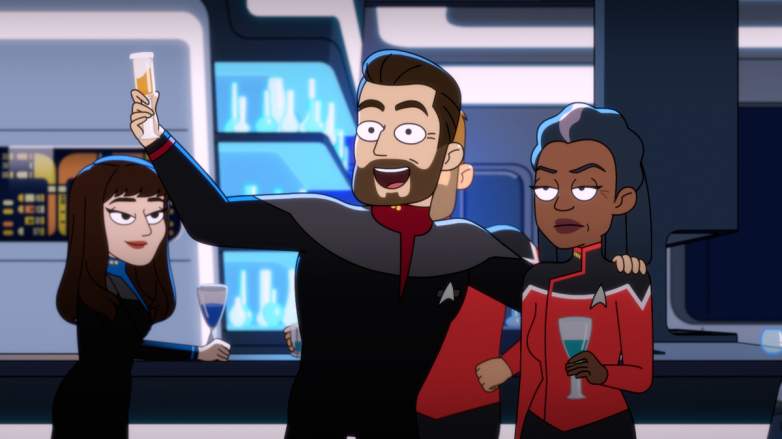
CBS All Access
The newest show in the Star Trek franchise picks up a couple of years after Voyager returned to Earth and about five years after the events of DS9. Lower Decks relies heavily on the established Star Trek historical record. Characters regularly make references to pivotal figures in Star Trek history including Kirk, Spock, Picard, and Riker as well as pivotal events from episodes of the previous shows.
At the end of the first season, the Lower Decks crew met up with the crew of the USS Titan, which was commanded by William Riker and Deanna Troi, two central figures introduced to the Star Trek timeline by TNG. The second season of the show is expected to focus on the voyages of the Titan, so it may add some context to the lives Troi and Riker led after their time on the Enterprise and before they retired, which is depicted in Star Trek: Picard.
2399, Star Trek: Picard

CBS All Access
The main storyline of Picard took place in the year 2399, though flashbacks showed events that happened as early as 2385, five years after Lower Decks. The show added an incredible amount of content to the Prime Universe timeline, starting with the synthetic uprising on Mars in 2385.
The main action took place about 14 years after the uprising, but much of the show focused on the history leading up to the events of 2399 including Picard quitting Starfleet, the ban on synthetics, the secret production of synthetics and the underground dealings of the Tal Shiar, a Romulan black ops group.
Picard also caught fans up on what some of their favorite characters had been doing since they last saw them.
3187, Star Trek: Discovery Season Three
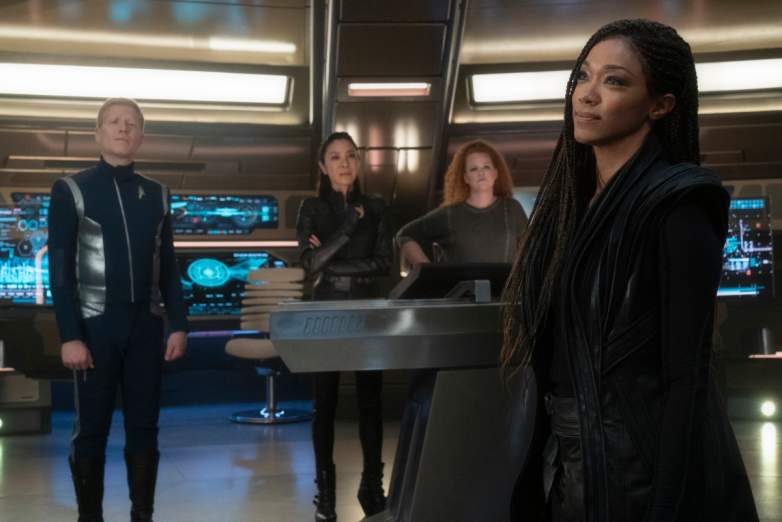
CBS All Access
The most recent addition to the Prime Universe timeline is set way in the future — 788 years after the events of Picard. When the crew of the Discovery traveled through a wormhole to the future so they could save the universe, they ended up in the year 3187. As the third season unfolds, fans are learning more each episode about how the universe has changed since the 2390s.
Though a comprehensive history of what happened between 2399 and 3187 hasn’t been laid out, Trekkies do know a bit about the historical record Discovery is establishing. At the beginning of the 3000s a catastrophic event called The Burn destroyed starships all over the universe, killing millions. This event destabilized the Federation as a political power and the coalition dramatically decreased in size and scope.
In 3187, the Federation’s place in the universe is shaky and coalitions like the Emerald Chain have a stranglehold on much of the universe. They terrorize any planet within warp range, and the Federation has little power to hold them at bay.
With the season finale of Discovery coming up in just a few days, fans are likely to get even more key information about how the history of the Prime Universe unfolded and how it will continue to play out.


No comments:
Post a Comment